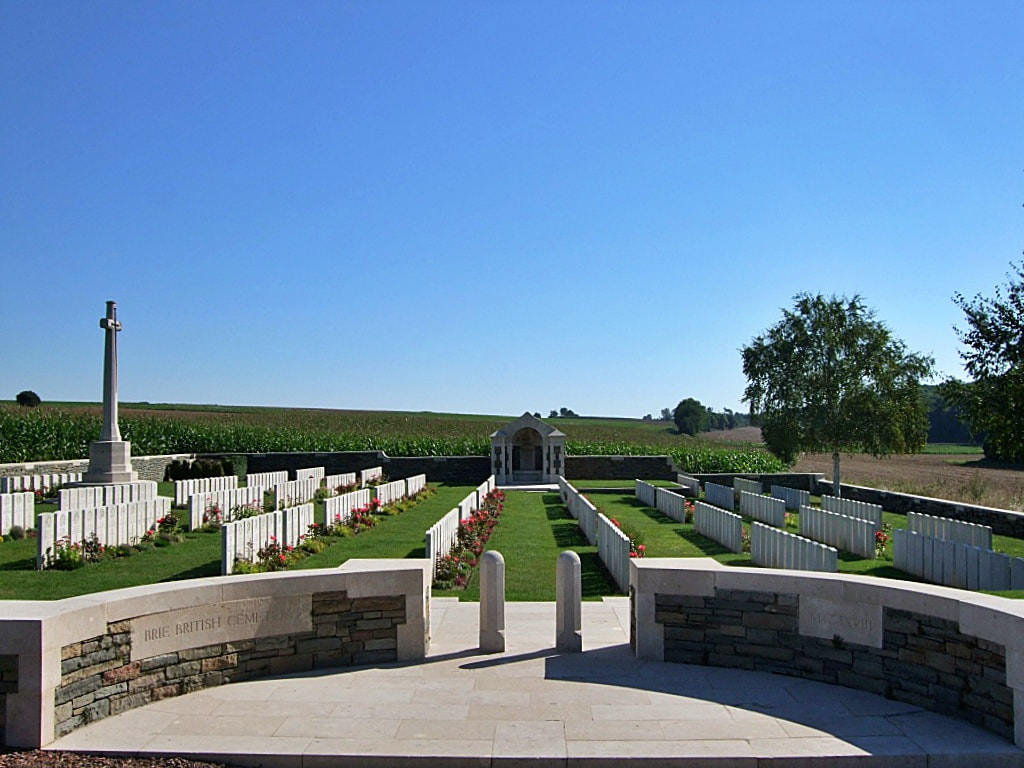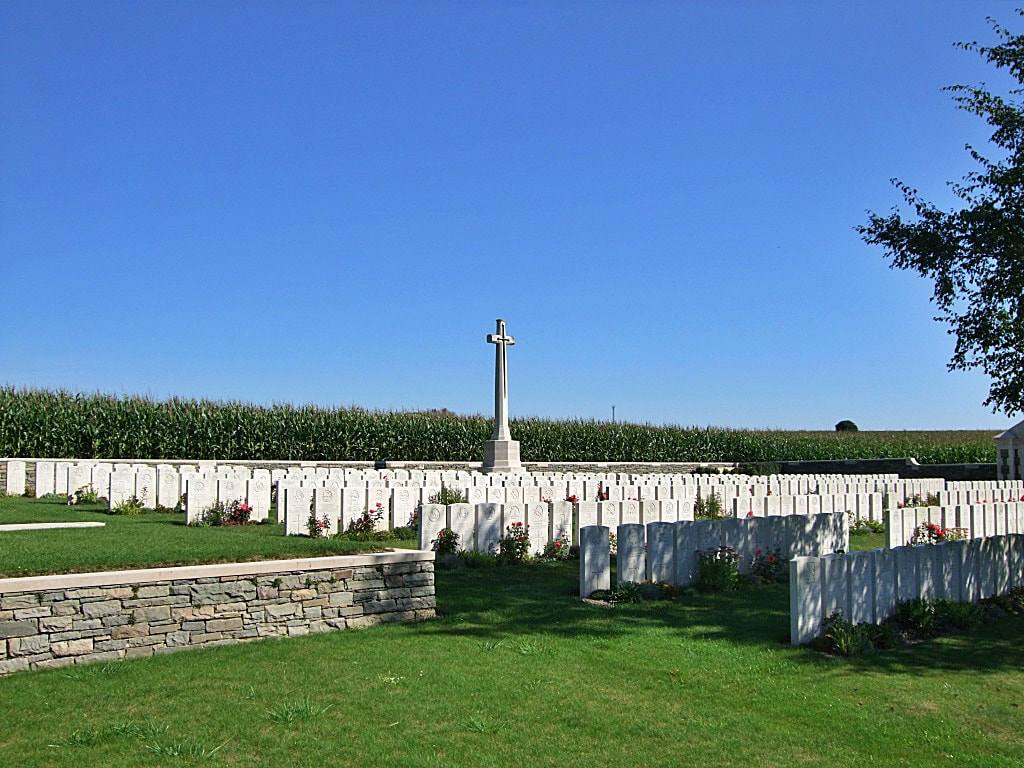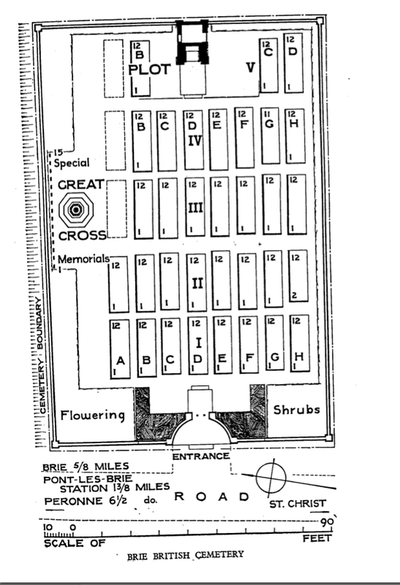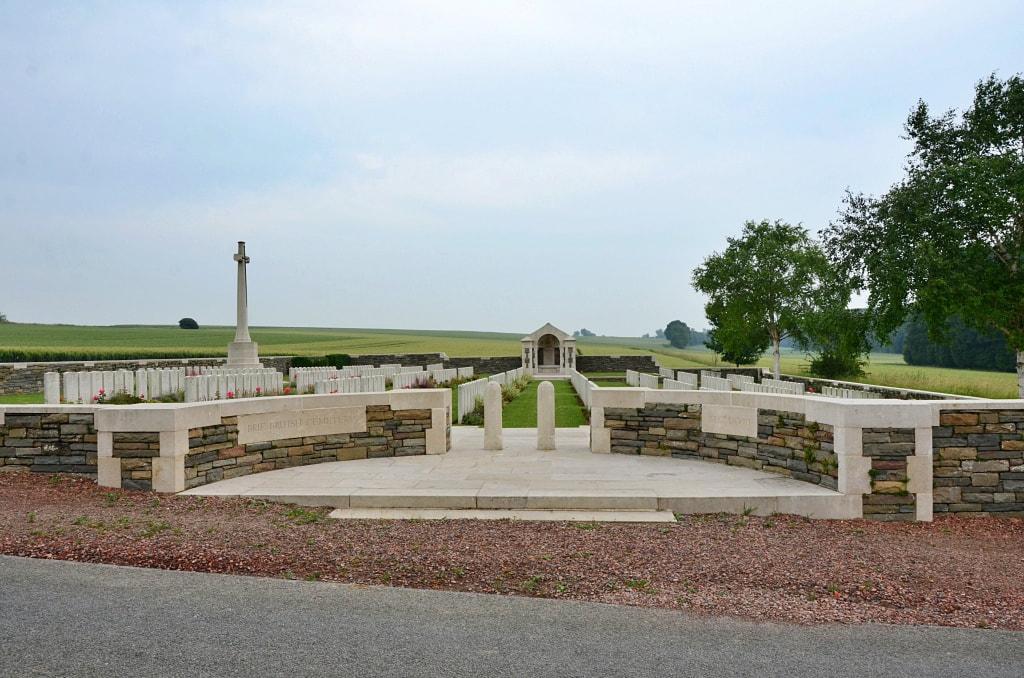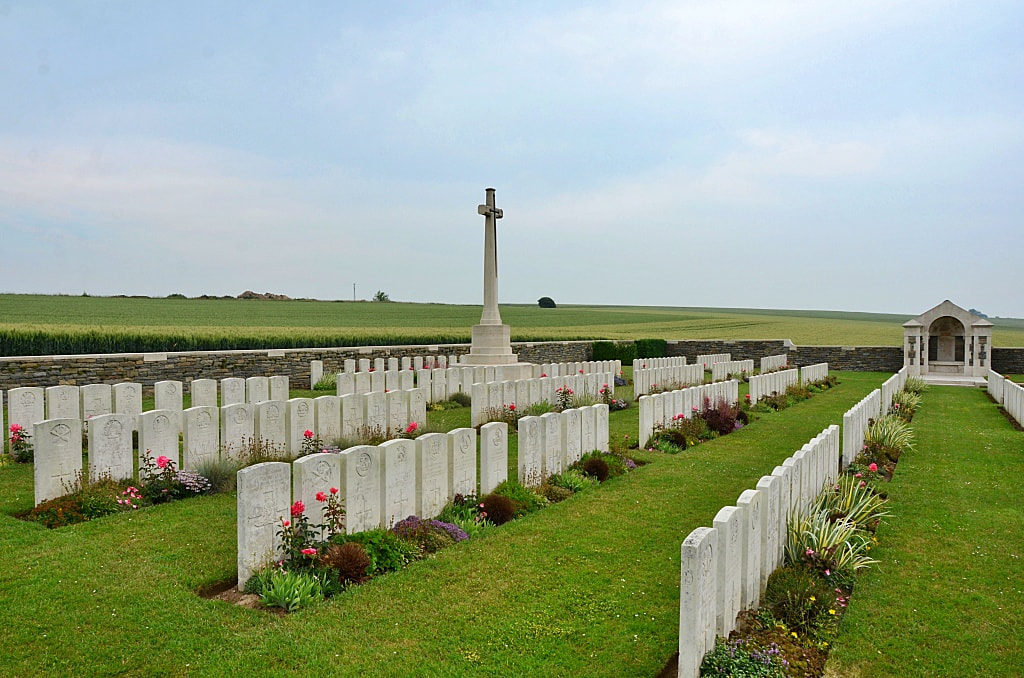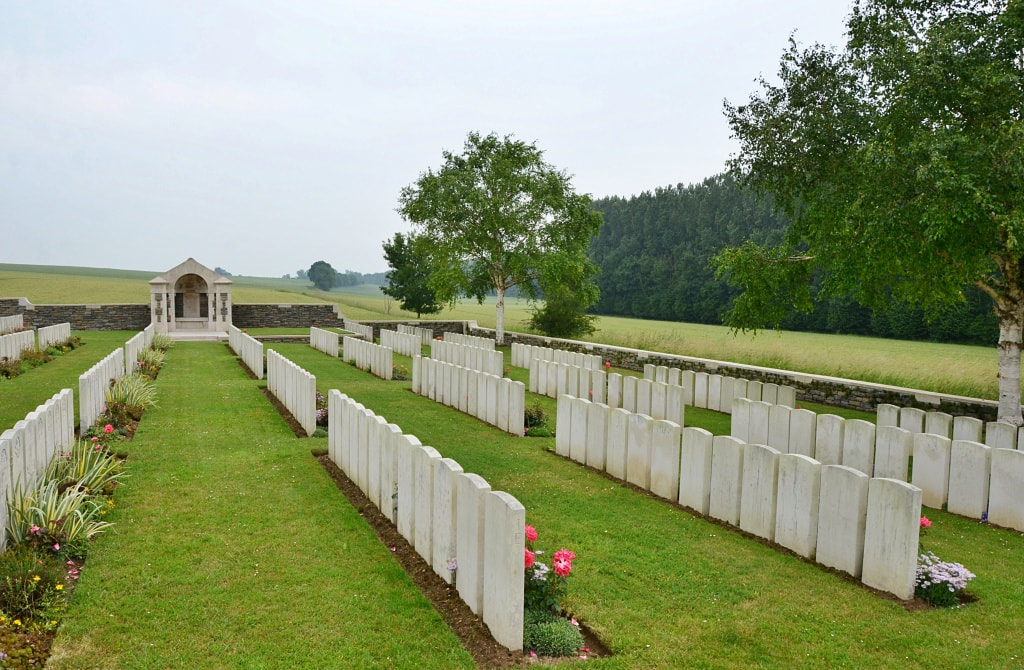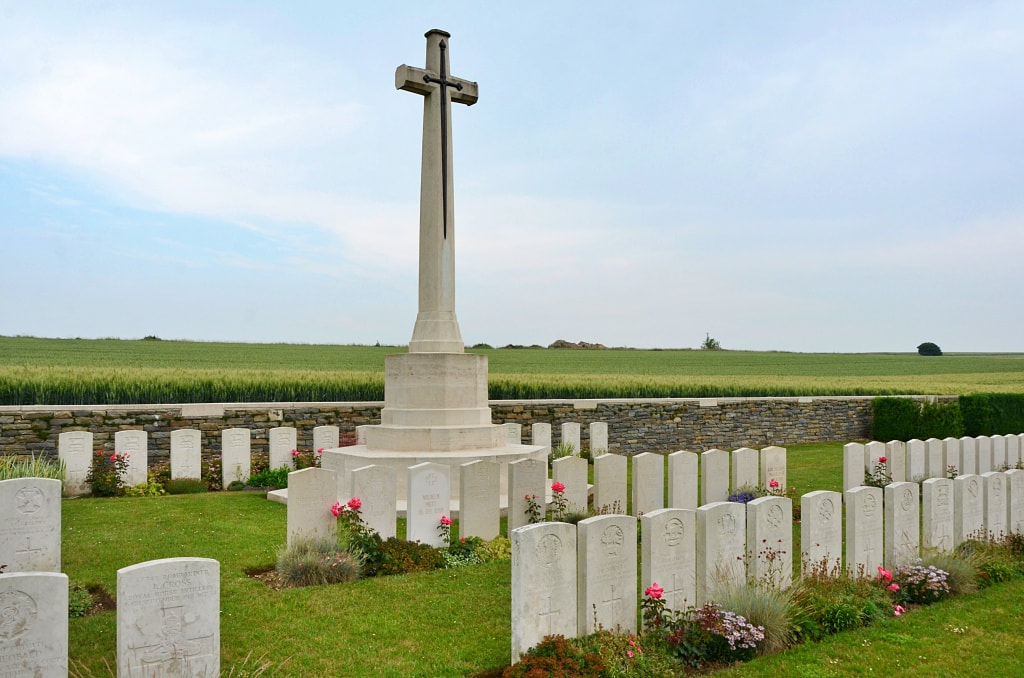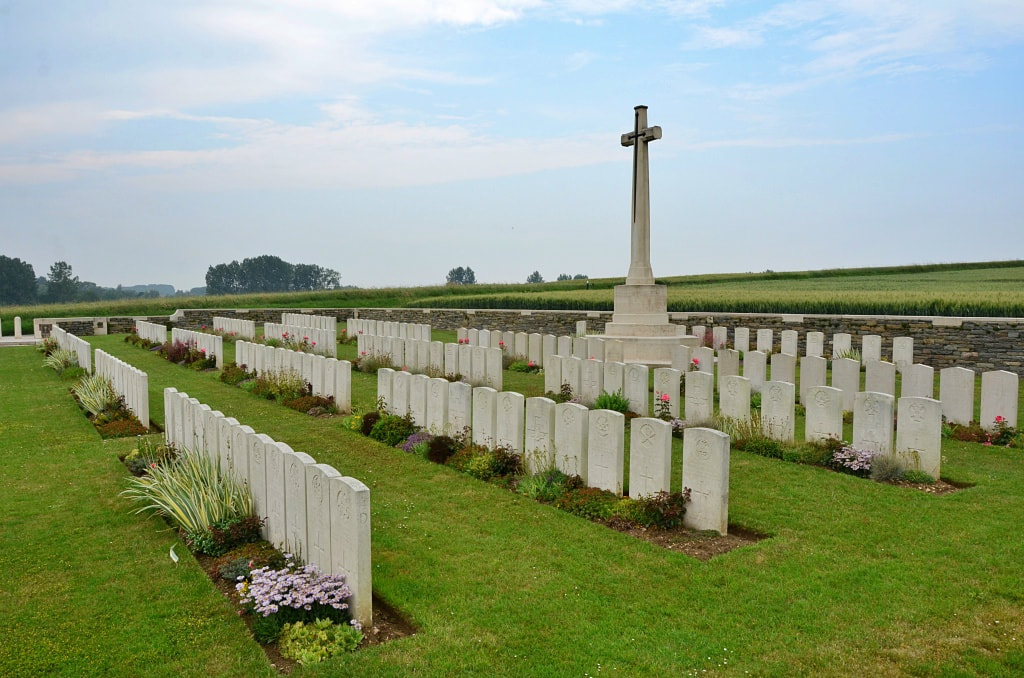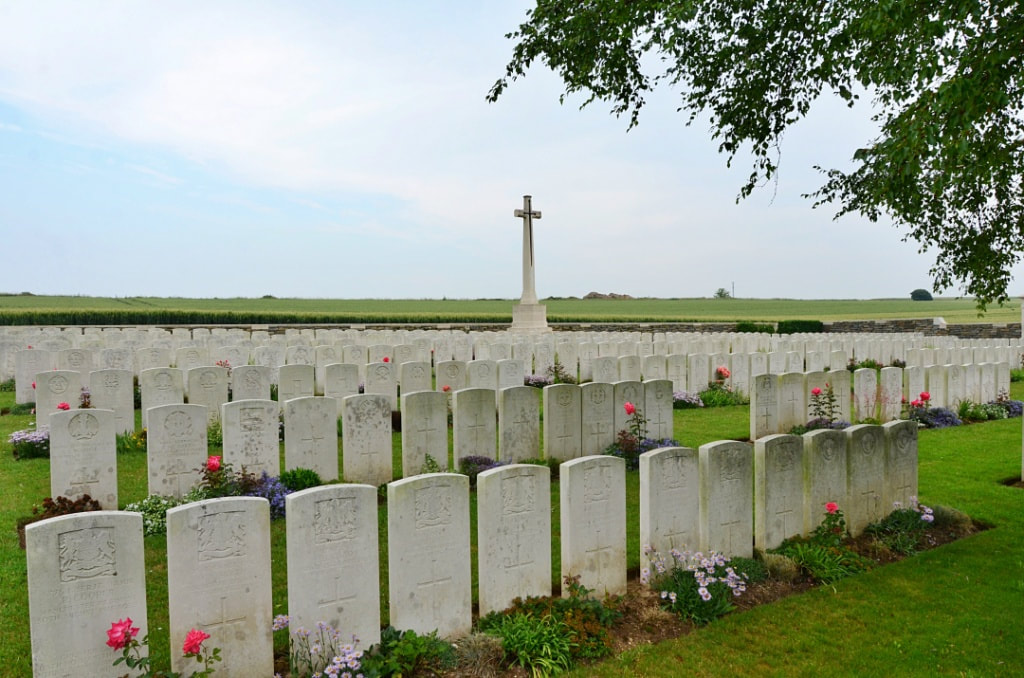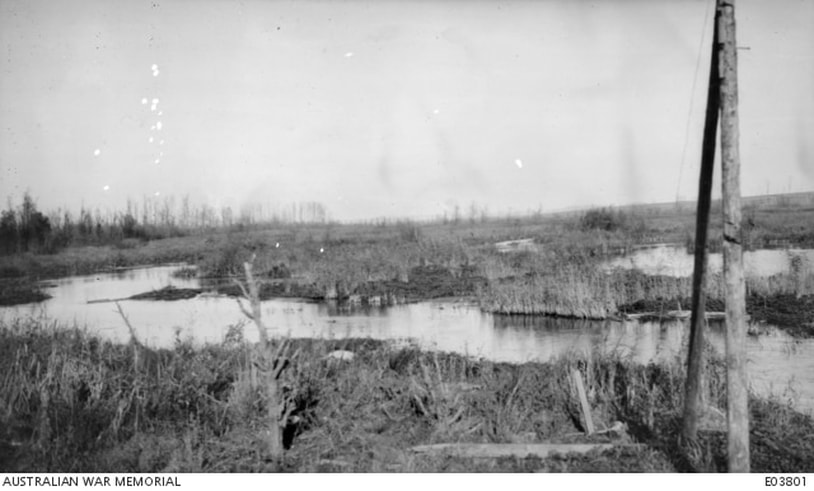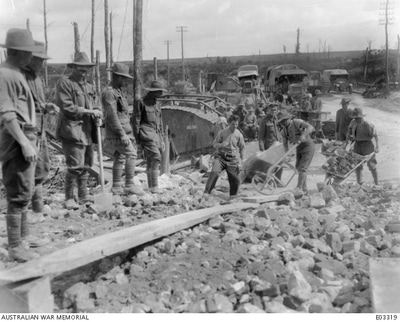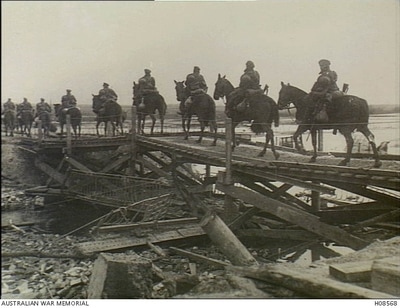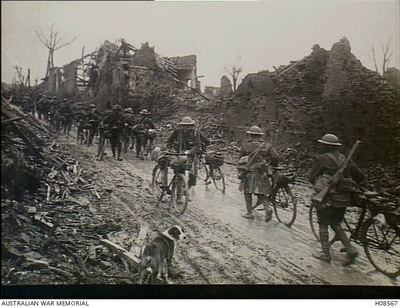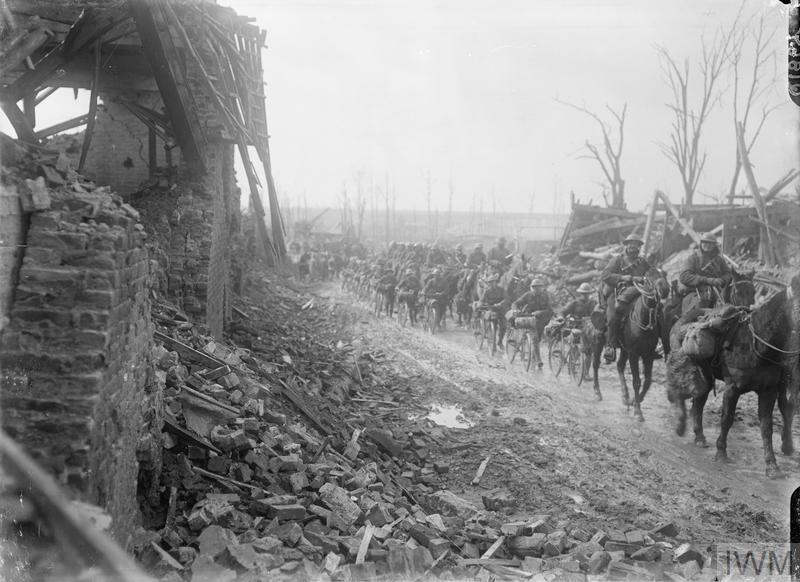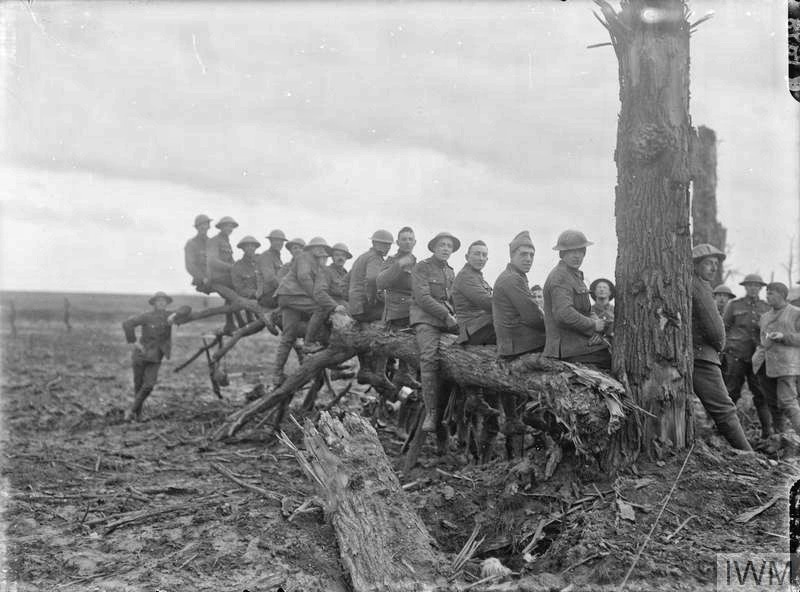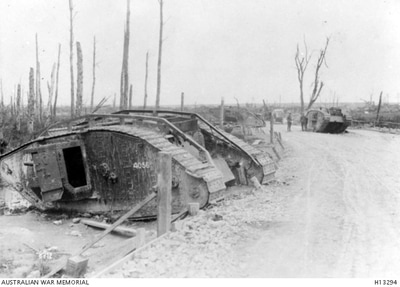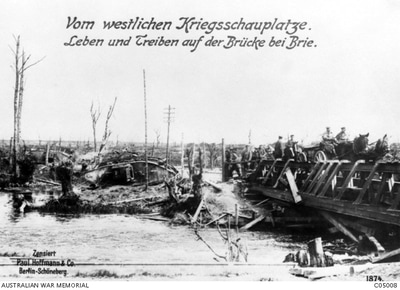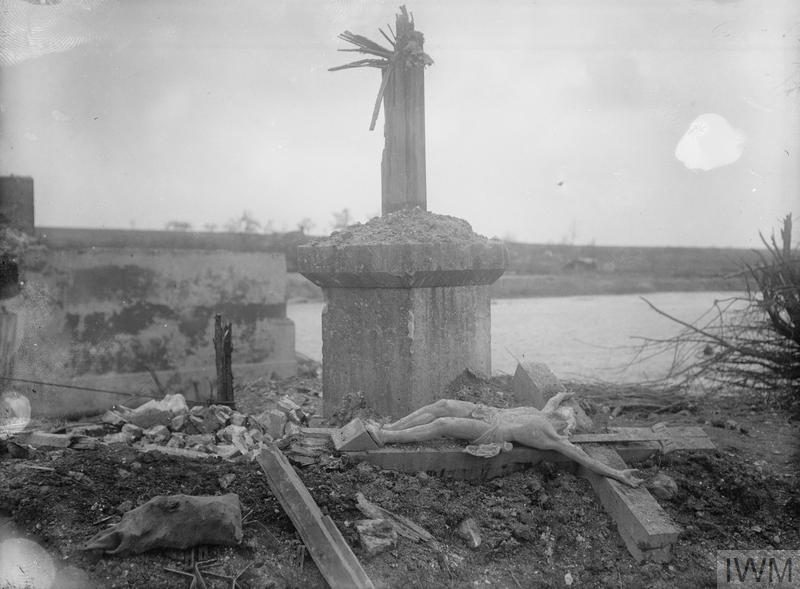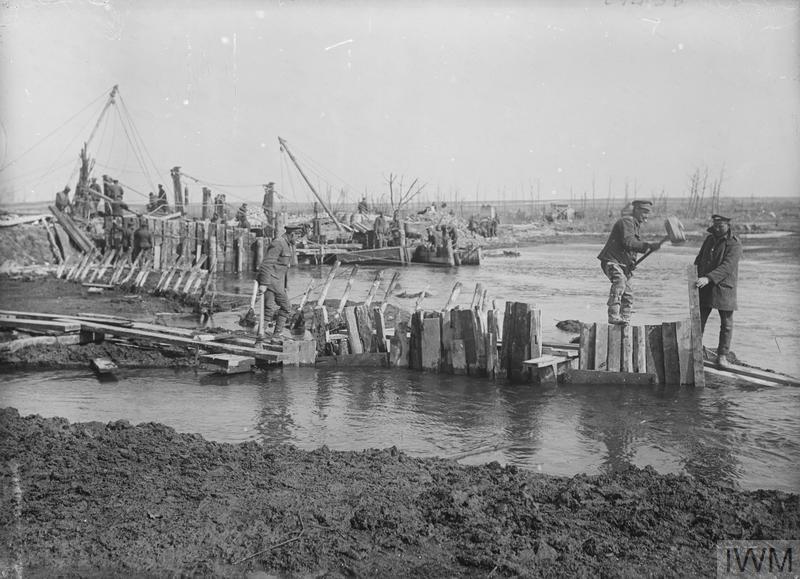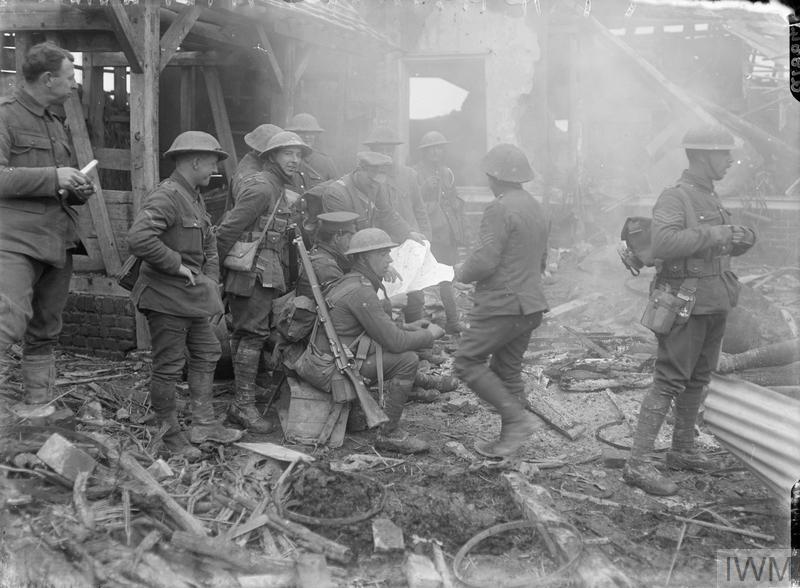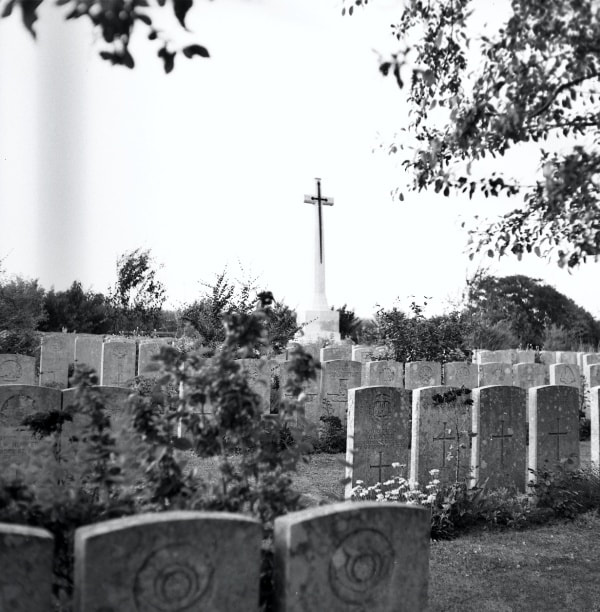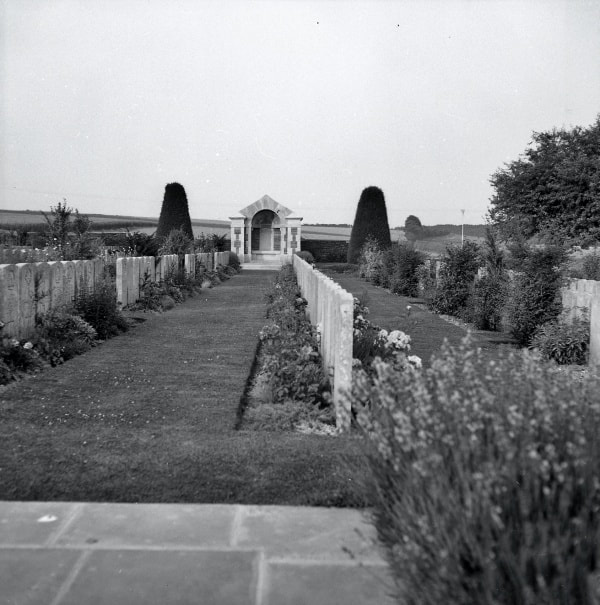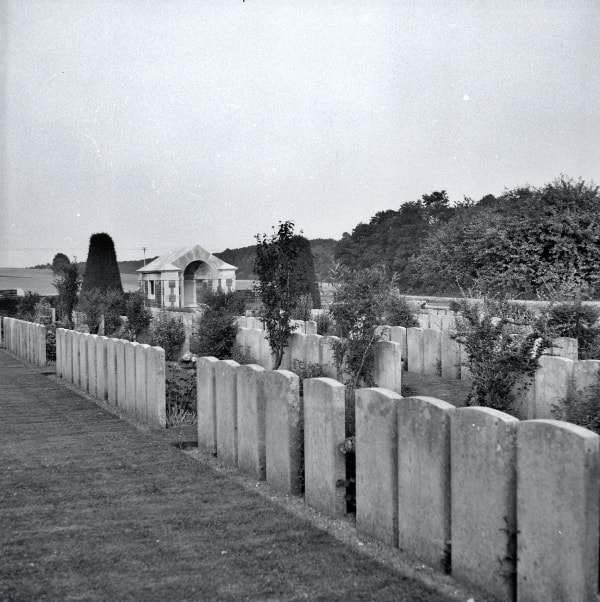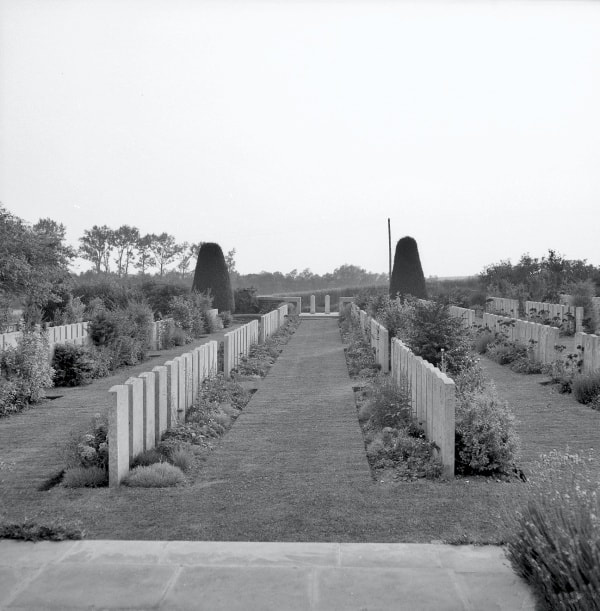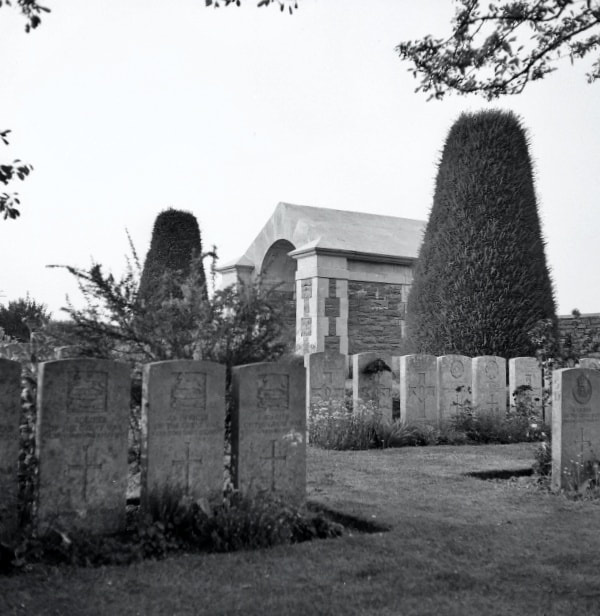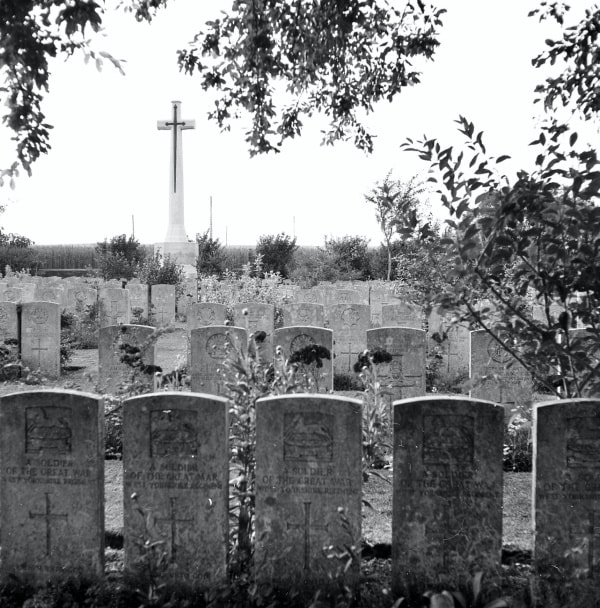BRIE BRITISH CEMETERY
Somme
France
GPS Coordinates - Latitude: 49.86622, Longitude: 2.93222
Location Information
Brie is a village on the Amiens-St Quentin road (D1029).
The Cemetery lies on the left side of the D88 road about 1 kilometre from Brie in the direction of St Crist-Briost.
Visiting Information
Wheelchair access to this site possible, but may be by alternative entrance.
Historical Information
On 18-20 March 1917, Commonwealth troops repaired the bridge and took the village of Brie during the German retreat to the Hindenburg Line. The village and the bridge were later lost on 23 March 1918, during the German offensive, but were regained on 5 September when the 32nd Division cleared the village.
The cemetery was begun by Commonwealth units after the second occupation of the village and taken over by the 5th, 47th and 48th Casualty Clearing Stations, which were posted at Brie in September and October before being moved on along the St. Quentin road to Bihecourt, near Vermand. It was enlarged after the Armistice when graves were brought in from the battlefields east and south of Brie and the following cemeteries:-
ST. CREN BRITISH and GERMAN CEMETERIES, MONS-ENCHAUSSEE, were side by side at the North-Western exit of the hamlet of St. Cren. They contained the graves of 23 soldiers from the United Kingdom and four from Australia, who fell in March, April, September and October, 1918.
Brie British Cemetery contains 409 Commonwealth burials and commemorations of the First World War. 49 of the burials are unidentified but there are special memorials to 15 casualties known or believed to be buried among them. There are also 36 German war graves in the cemetery.
The cemetery was designed by Sir Herbert Baker and William Harrison Cowlishaw
Total Burials: 445.
Identified Casualties: United Kingdom 332, Germany 26, Australia 7, Canada 1. Total 396.
Unidentified Casualties: United Kingdom 48, Unknown 1. Total 49.
Brie is a village on the Amiens-St Quentin road (D1029).
The Cemetery lies on the left side of the D88 road about 1 kilometre from Brie in the direction of St Crist-Briost.
Visiting Information
Wheelchair access to this site possible, but may be by alternative entrance.
Historical Information
On 18-20 March 1917, Commonwealth troops repaired the bridge and took the village of Brie during the German retreat to the Hindenburg Line. The village and the bridge were later lost on 23 March 1918, during the German offensive, but were regained on 5 September when the 32nd Division cleared the village.
The cemetery was begun by Commonwealth units after the second occupation of the village and taken over by the 5th, 47th and 48th Casualty Clearing Stations, which were posted at Brie in September and October before being moved on along the St. Quentin road to Bihecourt, near Vermand. It was enlarged after the Armistice when graves were brought in from the battlefields east and south of Brie and the following cemeteries:-
ST. CREN BRITISH and GERMAN CEMETERIES, MONS-ENCHAUSSEE, were side by side at the North-Western exit of the hamlet of St. Cren. They contained the graves of 23 soldiers from the United Kingdom and four from Australia, who fell in March, April, September and October, 1918.
Brie British Cemetery contains 409 Commonwealth burials and commemorations of the First World War. 49 of the burials are unidentified but there are special memorials to 15 casualties known or believed to be buried among them. There are also 36 German war graves in the cemetery.
The cemetery was designed by Sir Herbert Baker and William Harrison Cowlishaw
Total Burials: 445.
Identified Casualties: United Kingdom 332, Germany 26, Australia 7, Canada 1. Total 396.
Unidentified Casualties: United Kingdom 48, Unknown 1. Total 49.
Images in gallery below © Johan Pauwels
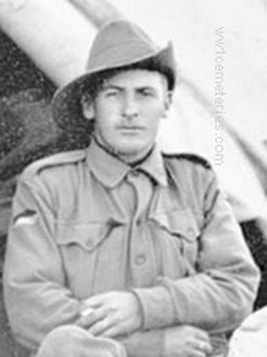
3277 Private
Herbert Stanley Bailey
50th Bn. Australian Infantry, A. I. F.
13th September 1918, aged 24.
Plot III. G. 12.
Son of Hannah Amy Godsmark (formerly Bailey), of 244, Hindley St., Adelaide, South Australia, and the late William Bailey.
Herbert Bailey embarked from Melbourne on 7 March 1918 aboard RMS Ormonde for Suez and then to Southampton, England, before being transferred to the 50th Battalion. Pte Bailey, a news vendor from Thebarton, South Australia prior to enlistment, joined his battalion on the Western Front near Villers-Bretonneux. Pte Bailey was wounded in action on 13 September 1918, died of these wounds the same day
Herbert Stanley Bailey
50th Bn. Australian Infantry, A. I. F.
13th September 1918, aged 24.
Plot III. G. 12.
Son of Hannah Amy Godsmark (formerly Bailey), of 244, Hindley St., Adelaide, South Australia, and the late William Bailey.
Herbert Bailey embarked from Melbourne on 7 March 1918 aboard RMS Ormonde for Suez and then to Southampton, England, before being transferred to the 50th Battalion. Pte Bailey, a news vendor from Thebarton, South Australia prior to enlistment, joined his battalion on the Western Front near Villers-Bretonneux. Pte Bailey was wounded in action on 13 September 1918, died of these wounds the same day
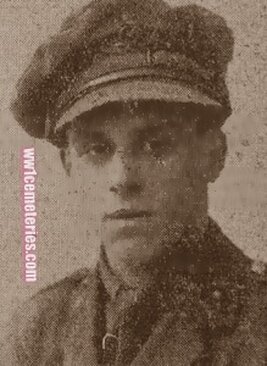
Lieutenant
Harold Butterworth, M. C.
Anti Aircraft Battery, Royal Field Artillery
20th September 1918, aged 21.
Plot I. E. 7.
Son of Thomas and Edith Butterworth, of Lakeside, Fairhaven, Lytham, Lancs. Formerly of Lawrence House School, St. Anne's-on-the-Sea, and The Schools, Shrewsbury.
"For conspicuous gallantry and devotion to duty during several days of active operations when he handled his section with marked ability, keeping such close touch with the field batteries that, at much danger to himself and his section, he prevented low flying aeroplanes machine gunning our batteries. His personal courage and resource offered a splendid example to his men."
Harold Butterworth, M. C.
Anti Aircraft Battery, Royal Field Artillery
20th September 1918, aged 21.
Plot I. E. 7.
Son of Thomas and Edith Butterworth, of Lakeside, Fairhaven, Lytham, Lancs. Formerly of Lawrence House School, St. Anne's-on-the-Sea, and The Schools, Shrewsbury.
"For conspicuous gallantry and devotion to duty during several days of active operations when he handled his section with marked ability, keeping such close touch with the field batteries that, at much danger to himself and his section, he prevented low flying aeroplanes machine gunning our batteries. His personal courage and resource offered a splendid example to his men."
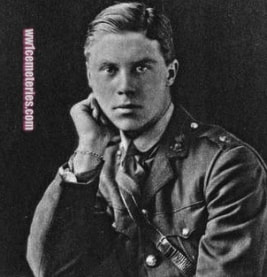
Second Lieutenant
Cecil Alexander Gordon Fitch
260th Bty. Royal Garrison Artillery
18th September 1918, aged 19.
Plot II. A. 7.
Only son of Sir Cecil and Lady Fitch, of "Gordon Dene", Princes Rd., Wimbledon Park, London.
Cecil Alexander Gordon Fitch
260th Bty. Royal Garrison Artillery
18th September 1918, aged 19.
Plot II. A. 7.
Only son of Sir Cecil and Lady Fitch, of "Gordon Dene", Princes Rd., Wimbledon Park, London.
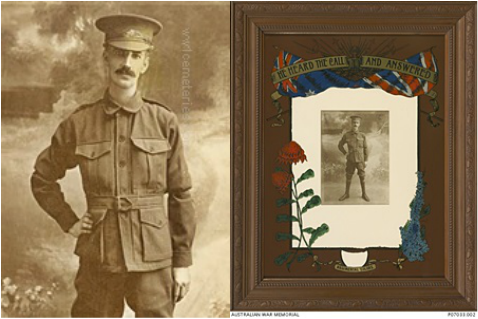
541 Corporal
Henry George Foster
4th Bn. Australian Machine Gun Corps
18th September 1918, aged 25.
Plot I. F. 11.
Son of William and Anderira Ellen Foster, of 21, Ann St., Lidcombe, New South Wales. Native of Tia, New South Wales.
Originally a member of 1st Anzac Cyclist Battalion, of Wattle Flat, NSW. A timber carter prior to enlistment, he embarked with the 4th Reinforcements on HMAT Anchises (A68) on 24 August 1916. He later transferred to the 4th Machine Gun Battalion and attained the rank of corporal in July 1918. On 18 September 1918, near Jeancourt, he was severely wounded in both legs during an advance. He later died of these wounds.
Henry George Foster
4th Bn. Australian Machine Gun Corps
18th September 1918, aged 25.
Plot I. F. 11.
Son of William and Anderira Ellen Foster, of 21, Ann St., Lidcombe, New South Wales. Native of Tia, New South Wales.
Originally a member of 1st Anzac Cyclist Battalion, of Wattle Flat, NSW. A timber carter prior to enlistment, he embarked with the 4th Reinforcements on HMAT Anchises (A68) on 24 August 1916. He later transferred to the 4th Machine Gun Battalion and attained the rank of corporal in July 1918. On 18 September 1918, near Jeancourt, he was severely wounded in both legs during an advance. He later died of these wounds.
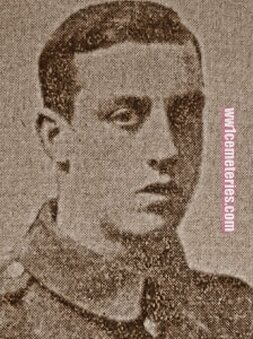
240670 Private
Arthur Hargreaves
1st Bn. West Yorkshire Regiment (Prince of Wales's Own)
25th September 1918, aged 23.
Plot II. E. 8.
Son of James and Emma Hargreaves; husband of Salah Ann Hargreaves, of 15, Park St., Barrowford, Nelson, Lancs. Lived at 99 Piccadilly Road, Burnley, Lancashire.
Arthur was admitted to a Red Cross Hospital on the 24th September 1918 suffering from severe wounds to both arms and abdomen, he died the following day.
Arthur Hargreaves
1st Bn. West Yorkshire Regiment (Prince of Wales's Own)
25th September 1918, aged 23.
Plot II. E. 8.
Son of James and Emma Hargreaves; husband of Salah Ann Hargreaves, of 15, Park St., Barrowford, Nelson, Lancs. Lived at 99 Piccadilly Road, Burnley, Lancashire.
Arthur was admitted to a Red Cross Hospital on the 24th September 1918 suffering from severe wounds to both arms and abdomen, he died the following day.
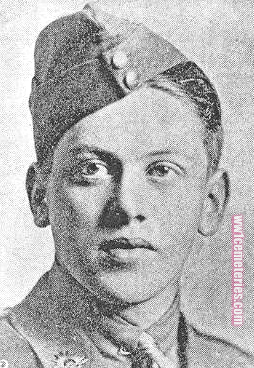
Second Lieutenant
Roland Frank Charles Machin
Australian Flying Corps
18th September 1918, aged 22.
Plot I. A. 7.
Son of Thomas E. and Charlotte Machin, of Queenstown, Tasmania. Native of Melbourne.
Roland Frank Charles Machin
Australian Flying Corps
18th September 1918, aged 22.
Plot I. A. 7.
Son of Thomas E. and Charlotte Machin, of Queenstown, Tasmania. Native of Melbourne.
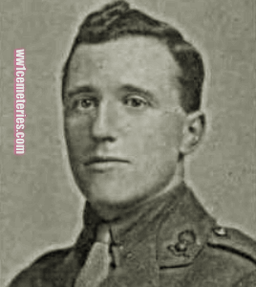
Second Lieutenant
David Rattray
"D" Bty. 23rd Bde. Royal Field Artillery
21st September 1918.
Plot II. F. 12.
David Rattray
"D" Bty. 23rd Bde. Royal Field Artillery
21st September 1918.
Plot II. F. 12.
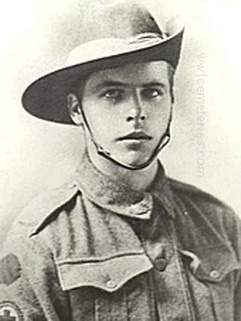
5300 Private
Noel Gordon Tampling
12th Field Ambulance, Australian Army Medical Corps.
20th September 1918, aged 20.
Plot II. B. 3.
Son of John William and Alice Martha Tampling, of 10, Edgerton St., Hawthorn, Victoria, Australia.
From Hawthorn, Victoria and an 18 year old clerk prior to enlisting on 17 July 1915, he embarked for overseas with the 13th Reinforcements of the 2nd Divisional Signal Company from Melbourne on 5 January 1916 aboard HMAT Afric. Following training in Egypt with the 4th Divisional Signal Company, he transferred to the 12th Field Ambulance and deployed with them to France in June 1916. He was wounded in action at St Quentin, France on 18 September 1918 and died of wounds two days later.
Noel Gordon Tampling
12th Field Ambulance, Australian Army Medical Corps.
20th September 1918, aged 20.
Plot II. B. 3.
Son of John William and Alice Martha Tampling, of 10, Edgerton St., Hawthorn, Victoria, Australia.
From Hawthorn, Victoria and an 18 year old clerk prior to enlisting on 17 July 1915, he embarked for overseas with the 13th Reinforcements of the 2nd Divisional Signal Company from Melbourne on 5 January 1916 aboard HMAT Afric. Following training in Egypt with the 4th Divisional Signal Company, he transferred to the 12th Field Ambulance and deployed with them to France in June 1916. He was wounded in action at St Quentin, France on 18 September 1918 and died of wounds two days later.
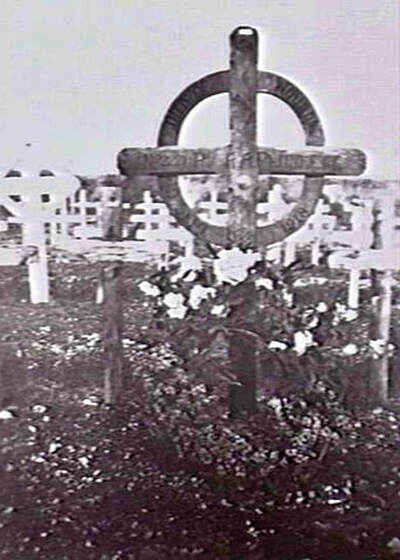
The grave of 2221 Private (Pte) Argyle Augustine Plunkett, 45th Battalion. A clerk from North Sydney, NSW prior to enlistment, Pte Plunkett embarked with the 4th Reinforcements from Sydney on HMAT Wiltshire on 22 August 1916. On 19 September 1918, aged 25, he died of wounds received in action at Mont St Quentin and was buried in the Brie British Cemetery, France.

